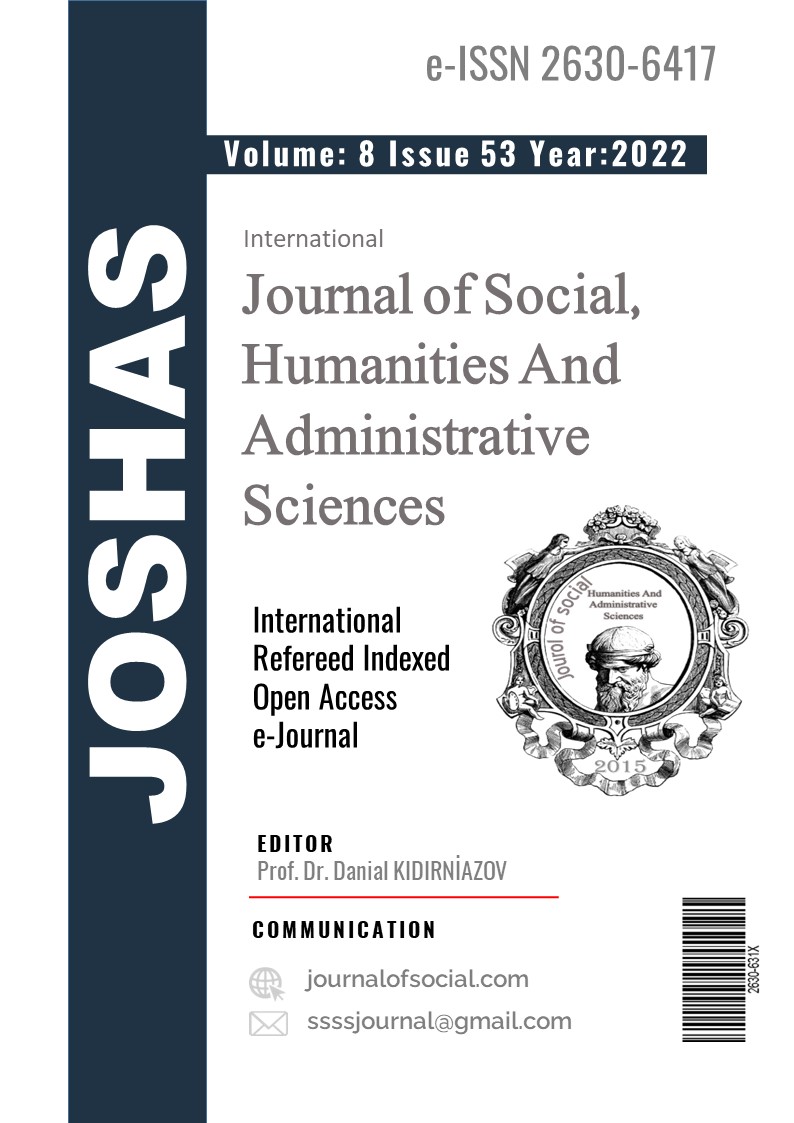Author :
Abstract
1950’li yıllardan önce, ölüm ve doğum oranlarının yüksek olduğu, göçün olmadığı geleneksel köy toplumlarında hane ve topluluk düzeyindeki yaşam döngüleri toprakla ve devletle var olan dengeler çerçevesinde sürmüştür. DP’nin, 1950’de iktidara gelmesi ve 1960 yılına kadar iktidarda kaldığı dönemde siyasal ve ekonomik alanlarda olduğu gibi sosyal alanlarda da etkisini göstermiş köklü değişimlerin yaşanmasının yolunu açmıştır. Kır nüfusu 1950 yılına kadar kent nüfusuna göre yüksek artış göstermiş ancak1955 yılından itibaren azalışa geçmeye başlamıştır. Türkiye’de iç ve dış göçler, nüfusun ülke içindeki dağılışında büyük değişimlere sebebiyet vermiş, özellikle göç alan yerlerde demografik yapıyı kısa sürede ve önemli ölçüde değiştirmiştir. 1950-1960 arası dönemde demografik anlamda kentleşmenin hız kazanması ve kentleşmenin kendini ortaya koyuş biçimi, siyasi iktidarın yapısı ve bu yapıya uygun olarak takip edilen politikalar kapsamında belirmiştir. Söz konusu yıllar Türkiye’nin hızlı bir kalkınma atağı yaptığı, siyasi, ekonomik ve toplumsal yapıda büyük değişimlerin yaşandığı dönemlerdir. Türkiye’de kentleşme hareketinin gelişimi incelendiğinde 1950 öncesi ve sonrası yıllar olmak üzere farklı dönemlerden söz etmek mümkündür. 1950’ye kadar çok yavaş artış kaydeden kent nüfusu, bu tarihten sonra özellikle kırsal alanlardan kaynaklanan çözülmenin, kentlere yönelik yoğun göçlere neden olması sonucunda hızlı bir artış sürecine girmiştir. 1950’den sonra makineli tarıma geçilmesiyle artan ve kırdan kente yönelik göçlerin şekillendirdiği hızlı bir kentleşmedir bu süreç.
Keywords
Abstract
Life cycles at the household and community level continued within the framework of the balances that existed with the land and the state in traditional village societies where death and birth rates were high and there was no migration before the 1950s. The DP paved the way for radical changes that showed their effects in social areas as well as in political and economic areas when it came to power in 1950 and remained in power until 1960. The rural population showed a high increase when compared to the urban population until 1950, but started to decrease after 1955. Internal and external migrations in Turkey caused great changes in the distribution of the population in the country, and changed the demographic structure in a short time and at significant levels, especially in the places that received immigration. The acceleration in urbanization in the period between 1950-1960 in demographic terms and the way urbanization manifested itself emerged in the scope of the structure of political power and the policies followed in line with this structure. These years were also constituted the period when Turkey made a rapid development leap and experienced great changes in its political, economic, and social structure. When the development of the urbanization movement in Turkey is examined, it is possible to mention different periods, including the years before and after 1950. The urban population, which increased very slowly until 1950, entered a rapid increase as of this date as a result of the dissolution that emerged from rural areas, causing intense migration to cities. This was a rapid urbanization process, which increased with the transition to mechanized agriculture after 1950 and was shaped by migration from rural to urban areas.
Keywords
- Aksu, L. (1998). “Dünya’da ve Türkiye’de Nüfus Analizleri Üzerine”, Sosyoloji Konferansları Dergisi, (25), 219-
- Aksu, L. (1998). “Dünya’da ve Türkiye’de Nüfus Analizleri Üzerine”, Sosyoloji Konferansları Dergisi, (25), 219- Ahi Evran Üniversitesi, Sosyal Bilimler Enstitüsü, Kırşehir.
- Batmaz, N. Y. & Erdem, Ç. (2016). “Türkiye’de 1950-1960 Döneminde Kentleşme Sürecini Siyasi İktidarın Yapısı ve Uygulamaları Açısından Yorumlamak”, Muhafazakâr Düşünce Dergisi, 1(47), 201-212.
- Demir, O. (2016). “Nüfus Politikaları ve Çin, Fransa ve Türkiye Örneklerinin Değerlendirilmesi”, Social Scienes, 11(1), 41-61
- Doğan, M. (2011). “Türkiye’ de Uygulanan Nüfus Politikalarına Genel Bakış”, Marmara Coğrafya Dergisi, (23), 294-305.
- Gökburun, İ. (2017). 1950-2015 Yılları Arasında İstanbul’da Nüfus Hareketleri, (Yayınlanmamış Doktora Tezi), İ.Ü Sosyal Bilimler Enstitüsü, , İstanbul.
- Gökburun, İ. (2020). “Türkiye’nin Demografik Dönüşüm Sürecinde Nüfus Politikalarının Rolü”, Gelecek Vizyonlar Dergisi, Coğrafya Özel Sayısı, 1-15
- Gürsoy, E. Z. (2008). “Cumhuriyet Döneminde Yeni İl ve İlçe Kurulmasındaki Yaklaşımlar”, Türk İdare Dergisi, (458), 81-94
- Kapluhan, E. (2014). “Türkiye’de Turizme Bağlı Kentleşmelere Farklı Bir Örnek: Milas(Muğla)”, Uluslararası Avrasya Sosyal Bilimler Dergisi, 5(15), 120-141
- Kasarcı, R. (1996). “Türkiye’de Nüfus Gelişimi”, Türkiye Coğrafyası Araştırma ve Uygulama Merkezi Dergisi, (5), 247-266
- Koyuncu, A. (2015). Kentleşme ve Göç, Hikmetevi Yayınları, İstanbul.
- Özdemir, H. (2012). “Türkiye’de İç Göçler Üzerine Genel Bir Değerlendirme”, Akademik Bakış Dergisi, (30), 1-15 Özensel, E. (2015). Türkiye’de Kırsal Yapıların Dönüşümü, Çizgi Yayınevi, Konya.
- Sertkaya Doğan, Ö. & Bostan, H. (2019). “Türkiye’nin Demografik Dönüşümü ve Nüfus Projeksiyonlarına Göre Fırsatlar”, Doğa Coğrafya Dergisi, (41), 61-90
- Tunç, H. (1989). “Türkiye'nin Demografik Yapısı ve Sorunları”, İstanbul Üniversitesi İktisat Fakültesi Dergisi, 47(1- 4), 367-378
- Yılmaz, E. & Çitçi, S. (2011). “Kentlerin Ortaya Çıkışı ve Sosyo-Politik Açıdan Türkiye’de Kentleşme Dönemleri”, Elektronik Sosyal Bilimler Dergisi, 10(35), 252-267
- Yurtoğlu, Nadir(2014), Demokrat Parti Döneminde Tarım Politikaları ve Siyasi Sosyal Ekonomik Hayata Tesirleri, Hacettepe Üniversitesi Atatürk İlkeleri ve İnkılap Tarihi Enstitüsü, Doktora Tezi, Ankara.





